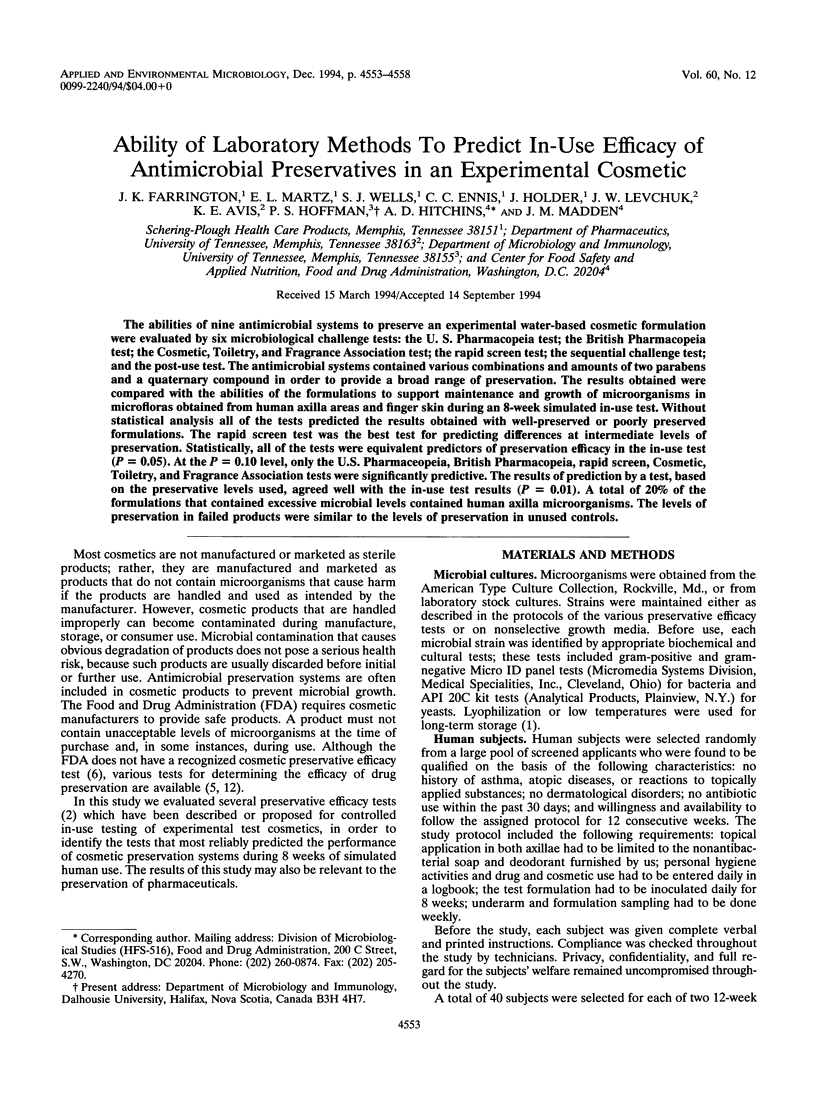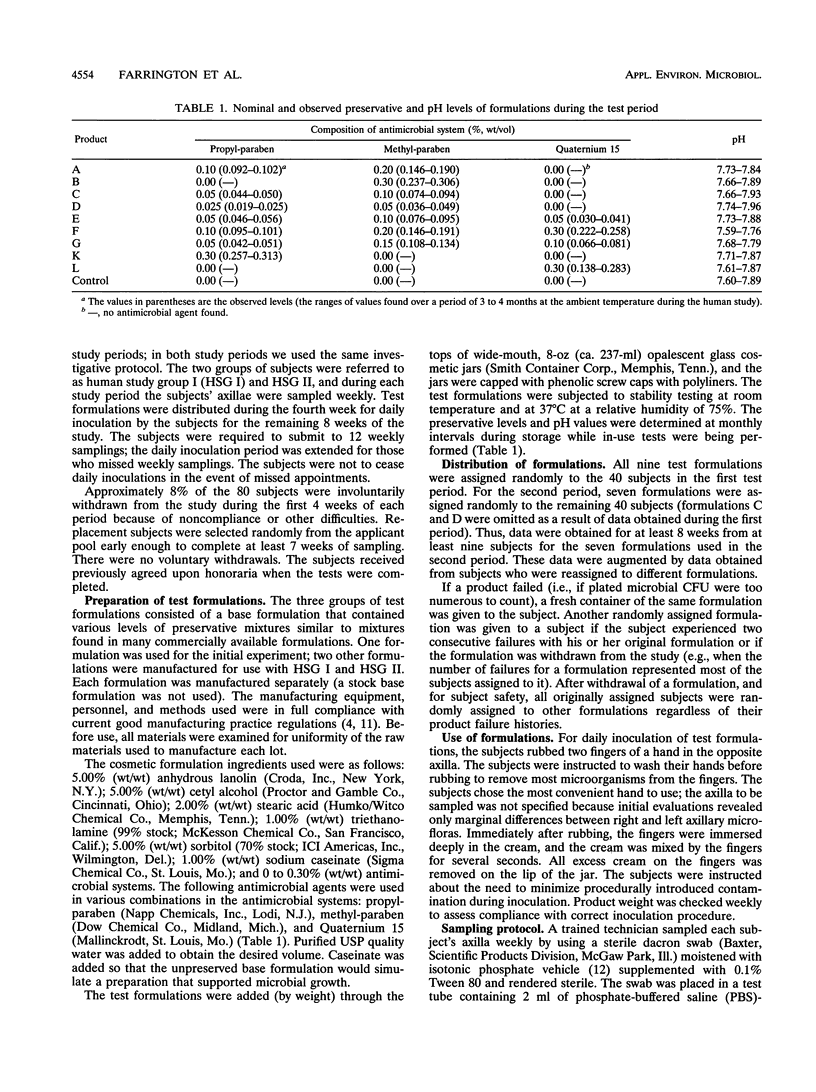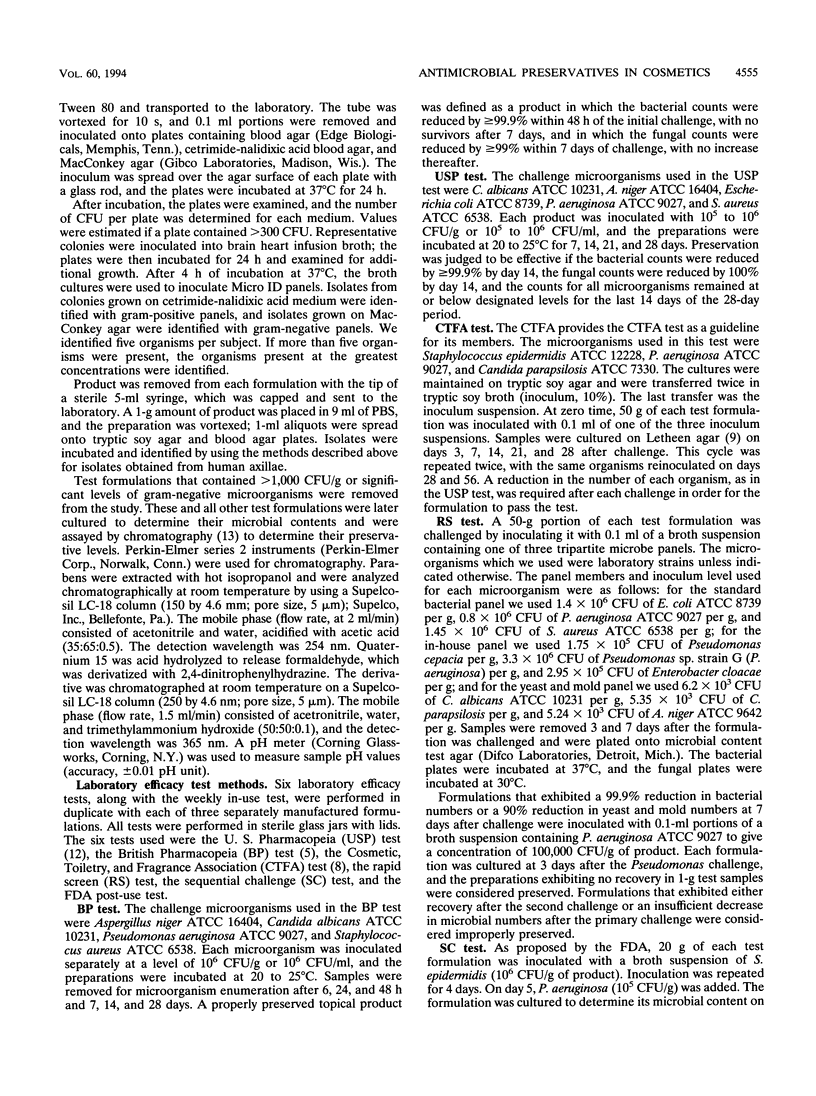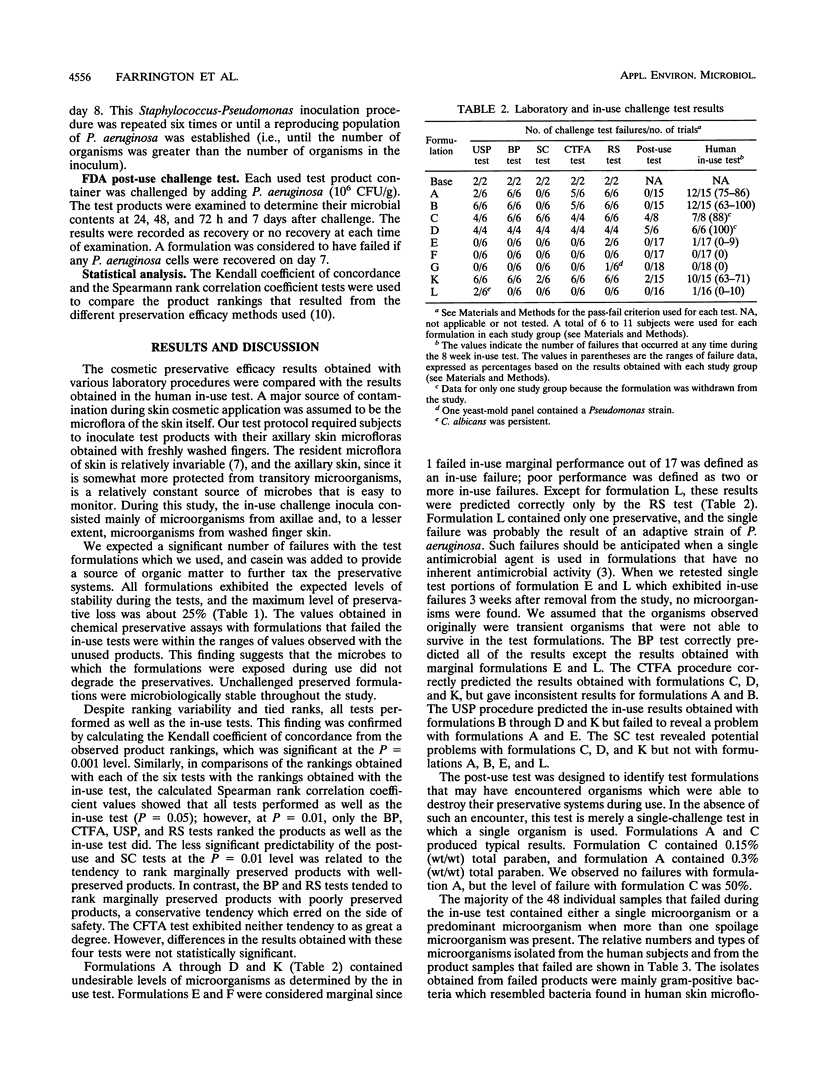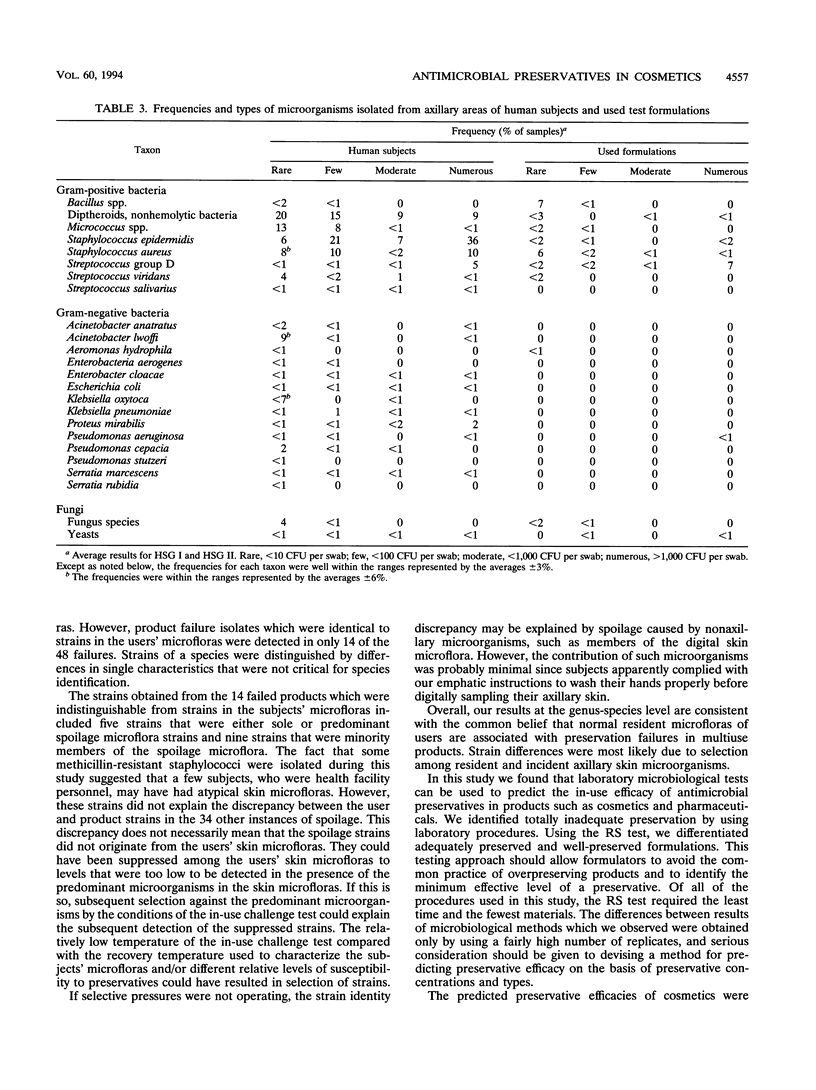Abstract
The abilities of nine antimicrobial systems to preserve an experimental water-based cosmetic formulation were evaluated by six microbiological challenge tests: the U.S. Pharmacopeia test; the British Pharmacopeia test; the Cosmetic, Toiletry, and Fragrance Association test; the rapid screen test; the sequential challenge test; and the post-use test. The antimicrobial systems contained various combinations and amounts of two parabens and a quaternary compound in order to provide a broad range of preservation. The results obtained were compared with the abilities of the formulations to support maintenance and growth of microorganisms in microfloras obtained from human axilla areas and finger skin during an 8-week simulated in-use test. Without statistical analysis all of the tests predicted the results obtained with well-preserved or poorly preserved formulations. The rapid screen test was the best test for predicting differences at intermediate levels of preservation. Statistically, all of the tests were equivalent predictors of preservation efficacy in the in-use test (P = 0.05). At the P = 0.10 level, only the U.S. Pharmacopeia, British Pharmacopeia, rapid screen, Cosmetic, Toiletry, and Fragrance Association tests were significantly predictive. The results of prediction by a test, based on the preservative levels used, agreed well with the in-use test results (P = 0.01). A total of 20% of the formulations that contained excessive microbial levels contained human axilla microorganisms. The levels of preservation in failed products were similar to the levels of preservation in unused controls.
Full text
PDF